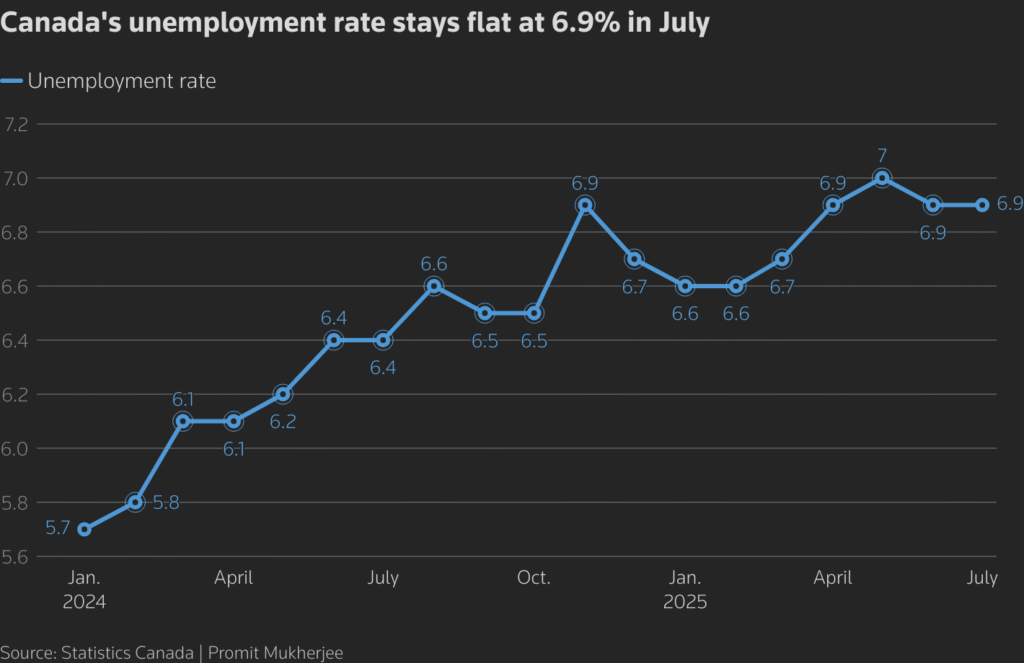Canada Sheds 40,800 Jobs in July as Manufacturing and Youth Employment Decline
OTTAWA – August 8, 2025 – Canada’s job market took a sharp downturn in July, losing 40,800 positions and marking the lowest employment rate in eight months, according to Statistics Canada. This drop comes after a strong gain of 83,000 jobs in June, showing the fragile state of the labor market.
Unemployment Holds at 6.9% Despite Major Job Losses
The unemployment rate stayed unchanged at 6.9%, close to a multi-year high.
Economists had expected a modest job gain of 13,500 positions and a slight rise in unemployment to 7%.
Michael Davenport, senior economist at Oxford Economics, described July’s data as the market “snapping back to reality” after a short-lived recovery.
Tariff Pressures Hit Manufacturing Hard
Canada’s manufacturing sector took a significant hit, losing nearly 10,000 jobs over the past year. Analysts point to U.S. tariffs on steel, aluminum, and autos—imposed by President Donald Trump—as a major factor in reduced hiring and increased layoffs.
The United Steelworkers Union reported around 1,000 members laid off, with more cuts likely in the coming months. Davenport predicts up to 140,000 job losses by the end of the year, pushing unemployment into the mid-7% range.
Youth Employment Falls to Lowest Level Since 1998
Young workers between 15 and 24 years old were hit hardest. Their unemployment rate rose to 14.6%, the highest since 2010 (excluding pandemic years).
The employment rate for this group fell to 53.6%, a level not seen since November 1998 outside of COVID-19 disruptions.
Sectors with the Largest Job Losses
Several industries saw notable declines:
- Information, Culture & Recreation: Down 29,000 jobs
- Construction: Down 22,000 jobs
- Business & Support Services: Down 19,000 jobs
Bank of Canada Faces Rate Cut Decision
The Bank of Canada kept its key interest rate unchanged last week, citing previous labor market strength. However, weakening job numbers and controlled inflation could lead to a rate cut at its next meeting on September 17.
Money market data shows a 38% probability of a cut, up from 27% a day earlier.
Canadian Dollar Slightly Lower
Following the report, the Canadian dollar slipped 0.07% to 1.3753 against the U.S. dollar (72.71 U.S. cents).

Wage Growth Slows
The average hourly wage for permanent employees rose 3.5% year-over-year to C$37.66, slightly higher than the 3.2% increase in June.
Also read more about the Trump New U.S. Tariffs Shake Up Global Trade: Countries Brace for Long-Term Impact
Share this content:







